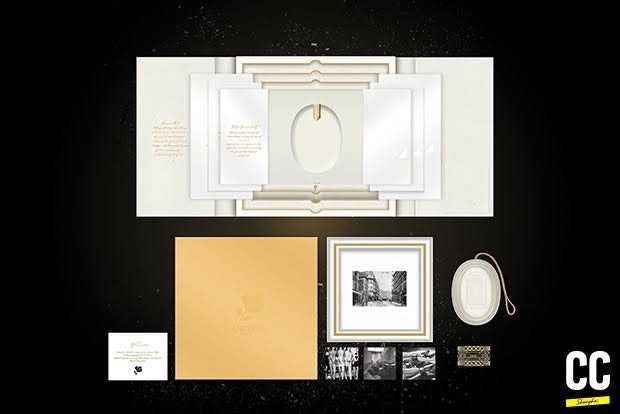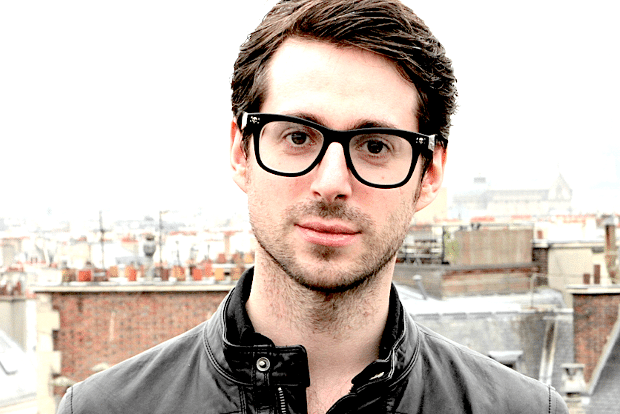
Luxury brands seeking to connect to Chinese consumers to build relevancy and a brand image must tell a good story. Helping to craft their tale is Creative Capital, an independent branding agency founded in Shanghai by Louis Houdart. The company, which now has offices in Shenzhen and New York, aims to help primarily Chinese clients, but also has a small range of leading international names. Recently, it worked with Saint James, the French fashion brand known for its nautical striped shirts, and it's currently working on a project with Bioderma. It also has luxury stalwarts like Lancôme and Versace on its list of clientele. Creative Capital brings “local expertise” to international brands with a team led by Houdart, who comes from a background in retail in which he founded and sold his own business.

We reached out to Houdart to learn what sets international luxury brands apart when it comes to connecting with Chinese consumers and how the creative marketing game has changed in an increasingly competitive industry.
What is one of the main differences between the creative process in China vs. the West?#
It's a massive difference. It is a very, very, very specific and difficult market, but we have been able to find our place in it through a lot of hard work—Monday-to-Sunday type of work.
What are some trends you're seeing in the creative marketing and branding industry in China?#
Being focused, qualitative, and niche. Big advertising agencies have too many departments, politics and their attention towards brands gets diluted.
What has been your most successful creative concept for an international luxury brand trying to reach the Chinese market so far? What made it successful?#
Our Lancôme concept. It basically helped them talk to Chinese consumers about Paris without using the Eiffel Tower, nor by using a very creative but niche concept that didn't apply to consumers' daily lives. The idea behind the project was very simple. We decided to create a gift for VIPs, but instead of designing a gold USB card, we offered them a genuine piece of Paris history. We wanted the gift to be something unique that not even all the money in the world could buy, so we proposed to offer consumers a genuine vintage Paris postcard sourced from a Paris flea market. It was both simple and impactful.

Another good creative concept was for an event for Dom Pérignon. Like we did with Lancôme, we had an approach where we told a story that was in touch with people's emotions. We gathered people into a cold black room, and served wine. We started with simple wine, and videos of storms were projected on the wall, but as we served better wine, the temperature in the room warmed up and the weather in the video improved. By the time we were serving the best wine, the video showed a sunrise.
In both cases, we were the first agency to work only on concepts with them, but we didn't do any actual production.
Do you tend to put more emphasis on video marketing or on social media?#
It has to be the right balance. Video marketing is a great way for the consumer to feel the brand and for the brand to produce meaningful content, but social media brings relevance to consumers in addition to being an opportunity for the brand to interact with them.
Is it hard for brands in China to realize they need to create a story instead of a short-term advertising campaign?#
The old-school local companies, or executives of foreign brands that were relying on their name and distribution network are facing some challenges. For instance, big Chinese companies like Metersbonwe are headed to death row if they don't change. Other companies, such as Li Ning, have been trying, however, they have the right recipe, but the wrong ingredients. Li Ning has amazing potential to be a leading, exciting Chinese sportswear brand. To turn the company around, they hired an army of senior marketing executives from Adidas and Nike. The issue is that they hired most of them from the China market, and they were were great operational marketing people, but not creative marketing. They should have hired creative marketing employees from the head office.
But there are other brands that are doing it just right, like Zuczug, Icicle, and Exception. I am purposefully not mentioning brands like Shanghai Tang, which portrays a China made of jade, dragon, red, and gold. That of course tells a story, but one very far from the reality of Chinese consumers. While they aren't famous in the West, these brands are actually bigger and much more successful in China than Shanghai Tang or Shang Xia.
What is one of the biggest obstacles you've had to deal with in terms of an international brand's story translating poorly to the Chinese consumer?#
You don't want your brand to be explained too literally, nor be too complex. And don't underestimate your competition in Asia. The French cosmetic brand Yves Rocher was hammered in China because they arrived too confident they were the leading French natural brand, and this spot was taken by Inissfree from Korea and by some lovely spot-on local brands like Afu.
How has the way a Chinese consumer relates to brands evolved in the past five years?#
It radically changed from face consumption to taste consumption. In other words, a few years ago, consumers were either buying famous brands or cheap products, but now they are looking for a brand relevant to their lifestyle.
What is one piece of advice you'd have for a luxury brand trying to succeed in the China market?#
Find the right people. It's not that the China luxury market is getting worse, it is just that it used to be too easy, and that many executives in China were thinking that they were doing a good marketing job in China, while in reality in some cases, a monkey would have done the same job. In terms of marketing, they were getting a PR job, not a strategic marketing job—basically they were calling up friends and asking them to come in their store to spend money. Meanwhile, in retail, famous brands had a traction effect as shopping malls gave them free rent and the best locations. Now it's a different game. You need to be relevant to your consumers and bring more than just a famous name to the malls.